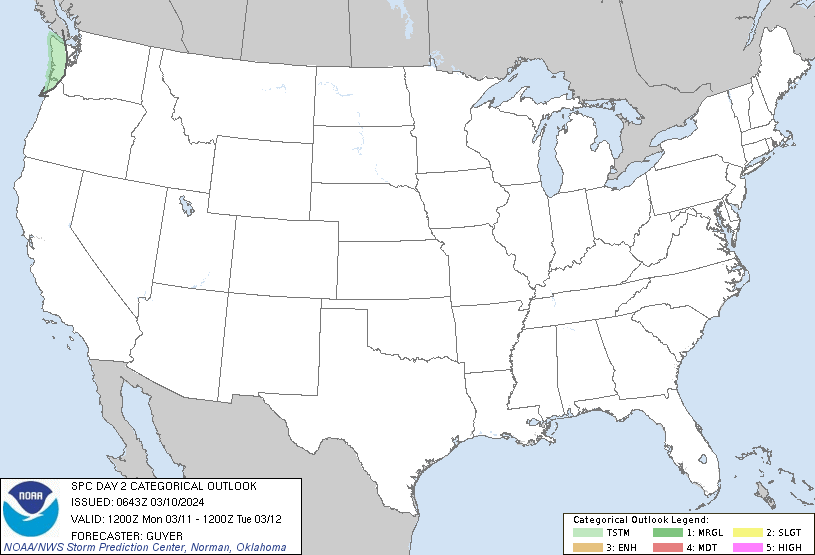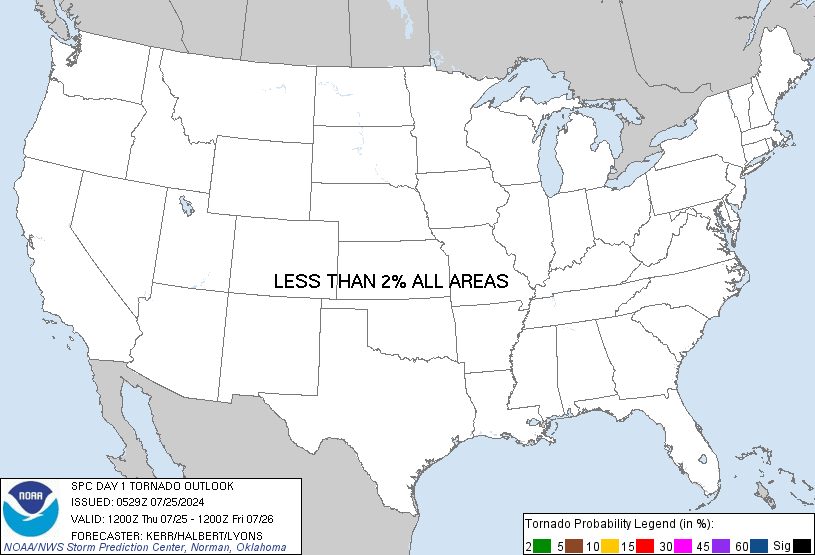As some you may already know, a slight risk of severe wx is outlined for the next couple of days across the southern gulf coast states. The main mitigating factor for severe potential may very well end up being a muddy warm sector with coastal convection pinching off the warm sector, pretty common with severe threats during the winter months. Nonetheless, some solutions show the warm front making its way north with an appreciative warm sector across much of Mississippi, and Alabama.
Here's the discussion from BMX: "There is fairly good support for a quality warm sector moving
inland on Monday ahead of a potent shortwave headed eastward
from Texas. Temperatures will be quite cold aloft, leading to
moderate amounts of instability if mid to upper 60s dewpoints move
into the area. A fairly substantial severe weather threat looks
likely if (and this is a big if) Gulf convection does not disrupt
the wind fields across the warm sector. The close proximity of the
500mb shortwave to the Gulf Coast and the left exit region of a
300mb jet over the Central Gulf are both factors in favor of
coastal convection. However, the warm front is expected to be
inland by 12Z Monday which argues against the idea of widespread
coastal convection. If the warm sector remains largely
uncontaminated, moderate amounts of shear and CAPE would probably
yield an environment favorable for supercells and tornadoes ahead
of a QLCS. It seems unlikely that our low forecast confidence will
get much higher until Sunday night or Monday morning, but there
appears to be two distinct and opposite possible outcomes. A low
confidence threat will be maintained in the HWO."
Here's the discussion from BMX: "There is fairly good support for a quality warm sector moving
inland on Monday ahead of a potent shortwave headed eastward
from Texas. Temperatures will be quite cold aloft, leading to
moderate amounts of instability if mid to upper 60s dewpoints move
into the area. A fairly substantial severe weather threat looks
likely if (and this is a big if) Gulf convection does not disrupt
the wind fields across the warm sector. The close proximity of the
500mb shortwave to the Gulf Coast and the left exit region of a
300mb jet over the Central Gulf are both factors in favor of
coastal convection. However, the warm front is expected to be
inland by 12Z Monday which argues against the idea of widespread
coastal convection. If the warm sector remains largely
uncontaminated, moderate amounts of shear and CAPE would probably
yield an environment favorable for supercells and tornadoes ahead
of a QLCS. It seems unlikely that our low forecast confidence will
get much higher until Sunday night or Monday morning, but there
appears to be two distinct and opposite possible outcomes. A low
confidence threat will be maintained in the HWO."





